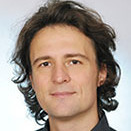Human Pose, Shape and Action
3D Pose from Images
2D Pose from Images
Beyond Motion Capture
Action and Behavior
Body Perception
Body Applications
Pose and Motion Priors
Clothing Models (2011-2015)
Reflectance Filtering
Learning on Manifolds
Markerless Animal Motion Capture
Multi-Camera Capture
2D Pose from Optical Flow
Body Perception
Neural Prosthetics and Decoding
Part-based Body Models
Intrinsic Depth
Lie Bodies
Layers, Time and Segmentation
Understanding Action Recognition (JHMDB)
Intrinsic Video
Intrinsic Images
Action Recognition with Tracking
Neural Control of Grasping
Flowing Puppets
Faces
Deformable Structures
Model-based Anthropometry
Modeling 3D Human Breathing
Optical flow in the LGN
FlowCap
Smooth Loops from Unconstrained Video
PCA Flow
Efficient and Scalable Inference
Motion Blur in Layers
Facade Segmentation
Smooth Metric Learning
Robust PCA
3D Recognition
Object Detection
Body Perception

We create virtual avatars from full body 3D scans and then manipulate body shape, pose, and appearance to create realistic stimuli for the study of the human perception of body shape.
We created personalized avatars and varied their weight to investigate the relative importance of visual cues (shape and texture) on the ability to accurately perceive own current body weight []. Participants perceived their body weight veridically when they saw their own photo-realistic texture and significantly underestimated their body weight when the avatar had a checkerboard texture.
Body shape and pose influence the perception of physical strength and social power of male virtual characters []. The perception of physical strength was mainly driven by the shape of the body, while the social attribute of power was influenced by an interaction between pose and shape. The effect of pose on power ratings was greater for weak body shapes; a character with a weak shape can be perceived as more powerful when in a high-power pose.
To study the "uncanny valley" we use cartoon body styles derived from popular characters and present a method to stylize the body shape and color of realistic avatars []. In perceptual studies we found that partially stylized body shapes result in increased perceived appeal. Avatars with high stylization or no stylization at all were rated to have the least appeal.
Our ongoing work is focused on body shape perception in patients with anorexia.
Members
Publications





